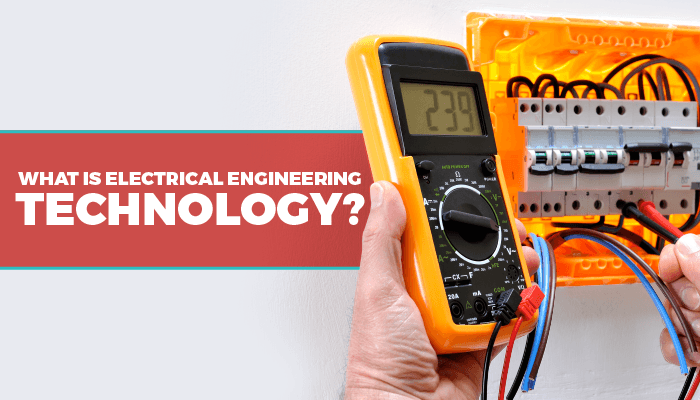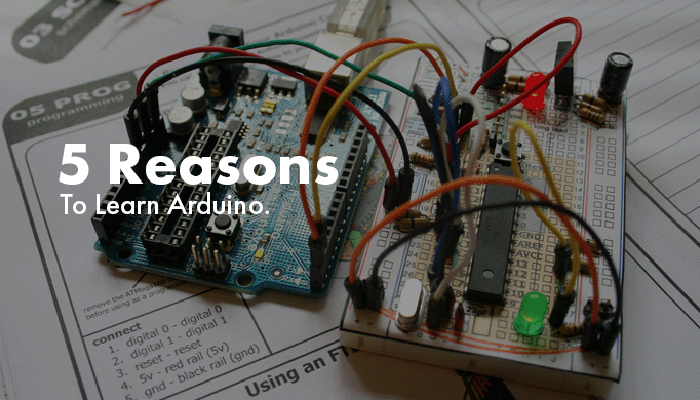When it comes to STEM subjects, nothing is quite as versatile and rewarding as engineering. This discipline comes in a variety of flavors, each one offering unique skill sets that can help you solve different problems.
Electrical engineering is one of the more recent disciplines, with electrical engineering technology becoming one of the fastest growing STEM sub-categories worldwide.
Because the world runs on high-tech devices and electronics, we decided that we wanted to find out more about this discipline and how it can be applied to your future.
What is Electrical Engineering Technology?
At first, it’s easy to look at this subject and get it confused with electrical engineering in general. However, it’s imperative that you understand that the technology part of this discipline has a significant meaning.
Electrical engineering is the study of electricity and how it applies to engineering as a whole.
Typically speaking, the course material deals with the fundamentals of how electricity operates, so you learn more about the theories and foundations of the subject.
With electrical engineering technology (EET), however, you see how these theories and ideas can be applied to actual, real-world creations. According to its definition, EET is all about the “design, application, installation, manufacturing, operation or maintenance of electrical/electronic(s) systems.”
This subject has a variety of sub-disciplines as well. Some of those include control systems, applied design, electronics, and telecommunications.
Any area of study that merges electrical engineering with some sort of technological application would fall into the EET category.
Where Can You Learn EET?
As you can imagine, EET courses can be found in a variety of institutions. Because of our high-tech, interconnected world, it’s becoming more and more necessary to study this field.
Thus, you should be able to find related coursework almost anywhere in the country.
A fantastic place to start is with the Accreditation Board for Engineering and Technology (ABET). This organization is the premier source for accrediting EET programs in educational institutions around the world.
If you go to their website, you can find a comprehensive list of schools and universities that teach EET classes. What’s great about using this resource is that you know that the institution follows ABET’s strict accreditation requirements, which means that you can trust that you’re getting the best education possible.
Each year, ABET updates these requirements to ensure that every school is compliant with the new rules. The criteria can either apply to EET as a whole, or it can refer to course-specific material. In either case, the schools have to provide sufficient evidence that they are following these criteria exactly.
When looking for electrical engineering technology courses, you can get either an associate or a bachelor’s degree. Both degree options focus on particular elements of the subject, so it’s imperative that you understand what you’re getting into beforehand. Here is a brief overview of the material included with each degree.
Associate Degree
For the most part, these course programs are dedicated to field applications of EET curriculum. For example, you may study circuit analysis and design, or computer programming. Any program you take will focus on how to use the ideas and elements inherent to EET and how they can be utilized and deployed in real-world applications. With regards to the math involved, associate degrees must be based in either trigonometry or algebra.
Bachelor’s Degree
Overall, these programs are a bit more generic, although they can be highly specialized in some cases. Bachelor’s degree courses will focus more on the analysis and design elements of EET, with some taking a more detailed approach to various systems, like communications.
Differential equations are a fundamental aspect of these courses and are necessary to maintain ABET accreditation. Also, students must demonstrate a basic understanding of project management to obtain a degree.
Becoming a Licensed Engineer
In some cases, graduates much also obtain licensure if they wish to get a job in the field of electrical engineering technology. Those who are close to finishing their undergraduate degree can usually take the Fundamentals of Engineering Exam.
Those who have at least four years of post-college experience are qualified to take the Professional Engineering Exam.
Many EET jobs require licensure, so it’s always a good idea to take these exams as soon as possible. Even if a particular position doesn’t need a license, it can help you stand out from the competition when being considered.
Electrical Engineering Technology Jobs
Since this field is all about how engineering and technology can work together, it’s one of the fastest growing STEM subjects. If you decide to go into EET, then you can find a wide variety of positions after you graduate and pass your exams. Some examples of EET jobs include-
Telecommunications – as our world becomes more and more connected, it’s imperative that we rely on capable engineers to keep our communication infrastructure intact. As wireless devices and the internet of things become more prevalent, EET will be at the forefront of new developments.
Medical Technology – people are living longer than ever, thanks in no small part to advancements in the medical field. Healthcare is always a crucial part of modern life, and it will only become more important as we figure out new ways to combat disease and other ailments. One particular area where EET and medical technology can merge is the rise of high-tech prosthetics.
Computer Science – it’s hard to imagine what modern life would be like without computers, and EET majors are going to continue to be at the forefront of new developments. As microchips and operating systems become smaller and more streamlined, computers will begin to integrate into more aspects of everyday life. Devices that used to be analog will now become high-tech.
Manufacturing – with the rise of 3D printing and its applications for a variety of industries, construction will rely on EET to make better use of these systems. As resources become more and more scarce, it will be critical to find new and improved ways to manufacture the goods we rely on the most.
Some other fields that electrical engineering technology graduates can go into may include-
Control systems
Aerospace and avionics
Research and development
Marine engineering
Systems analyst
Technology management
And more
Overall, any position that utilizes a broad understanding of electrical engineering and how it applies to technology will need people well-versed in EET.
Average Salary for Electrical Engineer
For the most part, graduates of EET programs can expect to find lucrative jobs in a variety of fields. Because EET touches such a wide range of subjects and applications, the demand for qualified applicants is high, and will only continue to grow in the future.
According to the Bureau of Labor and Statistics, the median salary for an electrical engineer is $91,000.
Those who work in the oil and gas or telecommunications industries usually have higher wages, with the top 10% making over $143,000 per year.
Even those on the bottom end of the spectrum can expect to make more than $60,000 annually, which further illustrates the fact that this discipline is in high demand.
As technology continues to permeate all aspects of modern life, we can expect to need more and more electrical engineering technology workers.
One thing to keep in mind is that some fields are growing faster than others. As we mentioned, oil and gas engineers have better wages, partially because these industries are experiencing growth.
Also, telecommunications is becoming more and more integral to modern society, so engineers focusing on communication technology can expect to find work much more easily.
Thus, when entering into the EET field, it’s imperative that you choose the right sub-discipline. You don’t want to graduate with a bachelor’s degree and find that you can’t get work because demand is not there.
Fastest Way to Understand EET
If you’re interested in electrical engineering technology, then the best thing to do is follow these steps to ensure that you can put yourself on the right career path.
1. Start Early
The sooner you realize that EET is the field you want to get into, the better off you’ll be. Start learning the fundamentals of electrical engineering and see if you can find projects that help you apply those lessons to real-world applications.
Project-based STEM curriculums are going to be the best way to get involved in EET.
Our Electronics 101 course is a great way to get started in EET. Included are three lessons that explain beginner concepts of EET (electronics, Arduino, and coding).
Once you get started on that course, the next best thing to do is get your hands on a project!
2. Earn a Bachelor’s Degree
Depending on the specific career path you want to get into, you may decide that it’s better to go for an associates degree. However, the first step is going to be a bachelor’s in electrical engineering technology.
Because this degree focuses on the fundamentals of the subject, it will serve as the foundation for everything else that comes after.
3. Pass the Fundamentals of Engineering Exam
To work in the field, you will usually have to pass this exam. Thus, you should try to take the test as soon as possible to obtain licensure.
4. Get an Entry-Level Position
Once you’ve passed the FE exam, then you want to get hired as quickly as possible. As we mentioned, you have to have at least four years of post-college experience to take the professional engineering exam, which means that the sooner you can start working in the field, the better.
In some cases, you may need a graduate or associates degree, so make sure you know if that’s required beforehand so you can plan accordingly.
5. Pass the Professional Engineering Exam
Finally, once you can take and pass the PE exam, you will be able to maximize your earnings potential.
One thing to keep in mind, though, is that many states require you to stay up-to-date on modern engineering practices.
This means that you will have to retake the test throughout your career – it’s not a “one and done” situation.
Resources:
http://main.abet.org/aps/Accreditedprogramsearch.aspx
https://www.learnhowtobecome.org/electrical-engineer/
https://en.wikipedia.org/wiki/Electrical_engineering_technology
https://ncees.org/engineering/fe/




